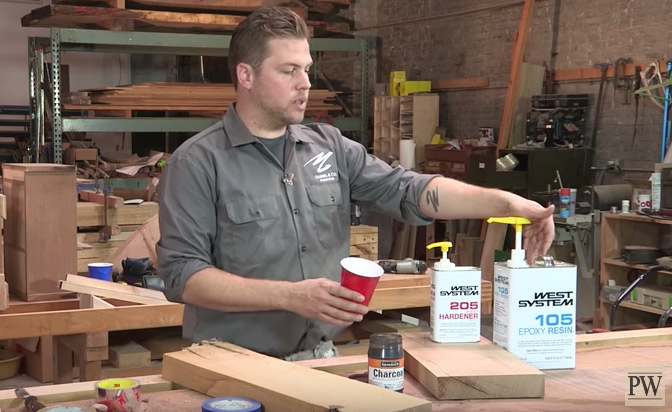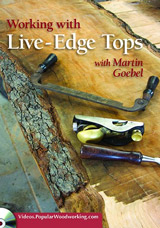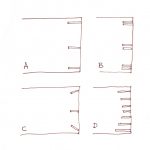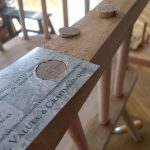We may receive a commission when you use our affiliate links. However, this does not impact our recommendations.
 Along with 64,000 or so (at least as of today) other people, I follow Goebel & Co. Furniture on Instagram. The furniture pieces coming out of this St. Louis-based shop are well-built and beefy, with imaginative designs that in many cases make use of live-edge tops that are stabilized with epoxy. (And take a look at some of the table bases – they’re pretty astounding!)
Along with 64,000 or so (at least as of today) other people, I follow Goebel & Co. Furniture on Instagram. The furniture pieces coming out of this St. Louis-based shop are well-built and beefy, with imaginative designs that in many cases make use of live-edge tops that are stabilized with epoxy. (And take a look at some of the table bases – they’re pretty astounding!)
So when we were looking for someone to do a video with us on both live-edge work and a contemporary table, Martin Goebel was my immediate choice. I’m glad he said yes (but sorry I didn’t get to go on the shoot).
Goebel was traditionally trained in cabinet and furniture making at the College of the Redwoods in Fort Bragg, Calif, after which he spent six years creating custom pieces while completing a Bachelor of Fine Arts in Studio Fine Arts from the University of Missouri, Saint Louis. He also earned a Master of Fine Arts in Furniture Design (focusing on digital design) at the prestigious Rhode Island School of Design. And in 2011, Goebel returned to his native St. Louis to found his furniture company.
Not everything the company produces uses live-edge pieces, of course – though I think it’s fair to say it all springs from a contemporary aesthetic that features elegant simplicity over ornamentation. It’s a call-back to the Arts & Crafts era, where the function, wood and joinery are given primacy. It’s built to take a beating and last – if you’ve spent any time in St. Louis bars, you’ve likely encountered a table or bartop (and quite likely chairs and bar stools) from Goebel & Co. Furniture. If it can stand up to that kind of use, well….
But one of the challenges of lasting live-edge work is, of course, dealing with that edge: Why and how to remove bark without damaging the edge (and how to prep it for finish); how to flatten a large slab; filling and stabilizing cracks and voids. Goebel addresses those and more in “Working with Live Edge Tops,” but we’ve excerpted the section on using tinted epoxy for filling cracks below, for your viewing pleasure.
 “Working with Live-Edge Tops” is available now at ShopWoodworking.com; Goebel’s second video, on making a modern trestle table (with two options for the top – live-edge and more traditional), will be out in March.
“Working with Live-Edge Tops” is available now at ShopWoodworking.com; Goebel’s second video, on making a modern trestle table (with two options for the top – live-edge and more traditional), will be out in March.
Here are some supplies and tools we find essential in our everyday work around the shop. We may receive a commission from sales referred by our links; however, we have carefully selected these products for their usefulness and quality.










Martin does do excellent work
He is very well trained
Sadly we still train in old technology when it comes to wood finishing product’s.
We don’t realize that just like that push mower that’s no longer the best option to mow our lawn neither are many of the things we put on our beautiful woods..
I would love to see advancement in this training.